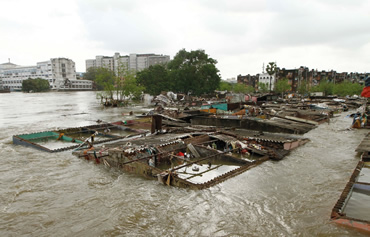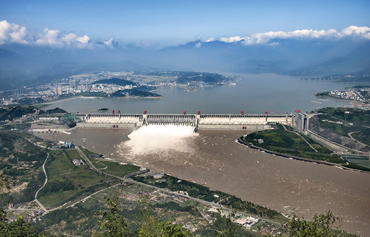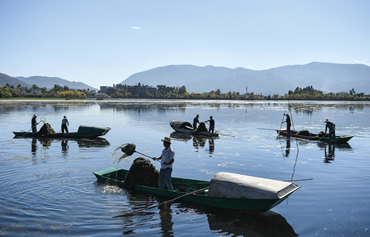Part 2 - Mapping hotspots
Ecological quality of aquatic ecosystems
Further biodiversity loss towards 2050
Overall, natural biodiversity will be preserved in less than 60% of the world’s fresh water ecosystems, under the Business-as-usual scenario.
Projected quality of fresh water ecosystems: further decline by 2050 except for northern regions

Source: PBL
High-quality ecosystems in tropical regions, including the most biodiverse river basins, are already severely affected. Quality decline will continue, especially in Sub-Saharan Africa and parts of Latin America and Asia.
Also in Europe, the United States and Japan/Oceania, most of the decline in quality has already occurred. In the sparsely populated northern regions, the quality of fresh water ecosystems will be least affected.
Fresh water ecosystems
The higher water temperatures due to global warming, in combination with higher nutrient emission levels, will affect the ecological quality of fresh water ecosystems.
Causes of fresh water biodiversity loss
Causal contribution to loss (in %)
Source: PBL
The main drivers of biodiversity loss are population growth and unsustainable economic development; their impact will be reinforced by climate change. Cities with poor wastewater treatment will continue to grow, and the number of dams in rivers is projected to increase.
Marine ecosystems
The increase in nutrient emissions, towards 2050, will also result in an increase in nutrient loading to coastal waters, especially in the Asian region. This will increase the risk of toxic algal blooms and oxygen depletion in those waters, and will negatively affect biodiversity.
Quality of coastal seas threatened by increased nutrient loading
x billion kg N/year
Source: PBL
Solutions
Preserving aquatic ecosystems requires an integrated ecosystem-based approach, on landscape scale, which acknowledges the diversity and quality of aquatic ecosystems.
Several solutions may contribute to preserving aquatic ecosystems









